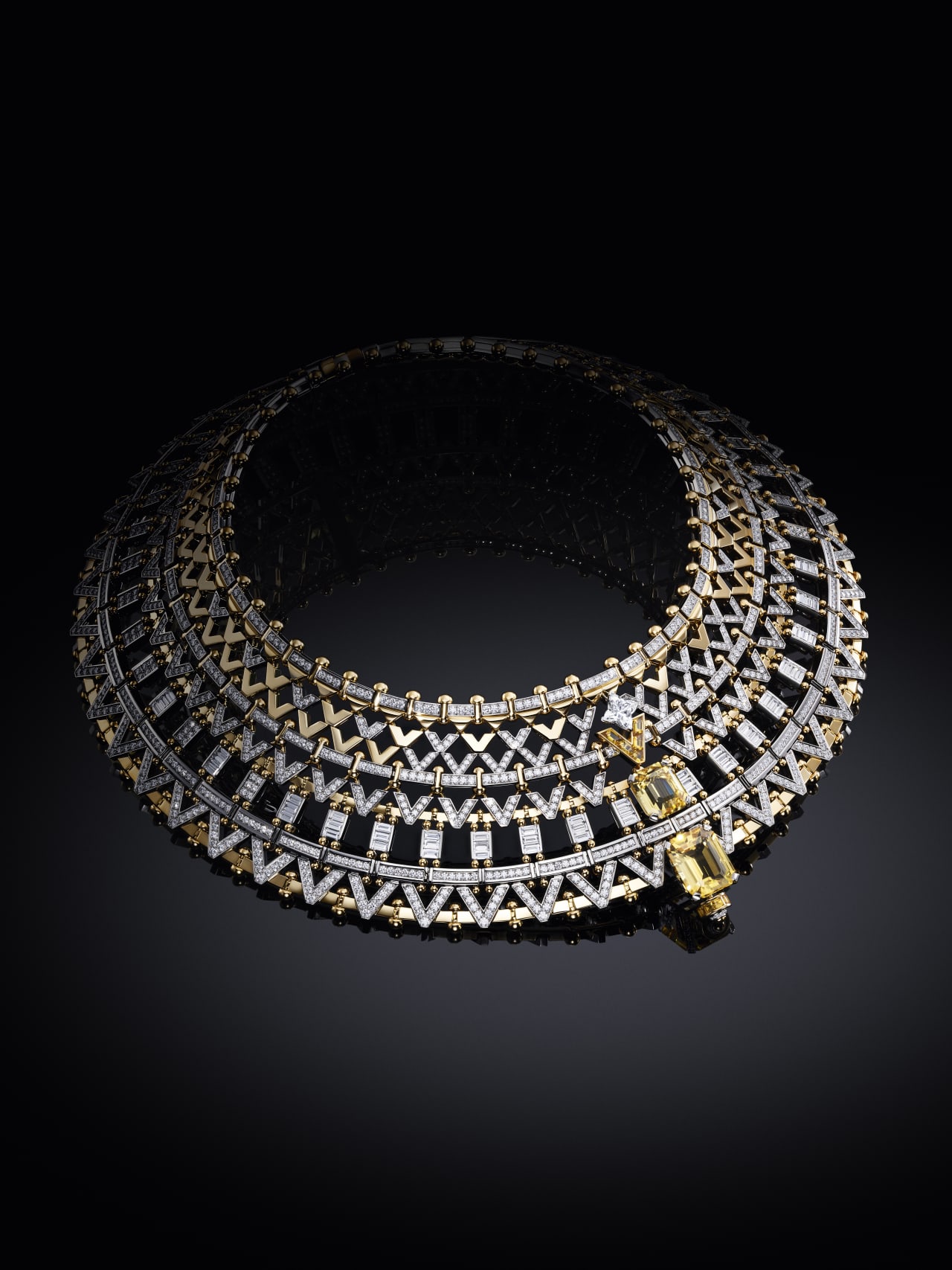As the world turns its eyes to Paris for the start of the Summer Olympics next month, Louis Vuitton pulled out all the stops for its largest, most extravagant, and expensive high-jewellery collection with the title Awakened Hands, Awakened Minds.
Making its debut in St. Tropez on Wednesday night, the collection will encompass 13 themes and 220 pieces, some of which have yet to be unveiled. Of the 100 unique pieces that were exhibited as the first chapter, one overarching theme is clear: French pride and the celebration of the remarkably transformative period in 19th-century France, which witnessed an explosion of French influence and inventiveness.
“France in the 19th century was a phenomenal time of incredible change, and when Paris really became the centre of the world,” says Francesca Amfitheatrof, artistic director for watches and jewellery, in a news release. “The design language of Awakened Hands, Awakened Minds reflects that—all its intricacies, complications, and innovations—turned into incredible jewels.”
The collection explores a journey through that century, beginning with the end of royal court rule, which resulted in a surge of creativity and talent as France’s ateliers and master craftsmen explored and experimented without limits. Among those influenced by this vibrant zeitgeist was a 16-year-old Louis Vuitton, who arrived in Paris in 1837. The apprentice developed his own unique trunkmaking métier, devising a flat and stackable trunk specifically designed for travel.
“Craftsmanship becomes the currency of this country,” Amfitheatrof said. “It is the birth of France’s Art de Vivre —and the birth of what we know as luxury today.”

Courtesy of Louis Vuitton
The collection’s Splendeur suite took inspiration from an imperial bed embellished with low-relief woodwork in lace-like floral patterns. But the luxury brand is looking to compete for consumers with more than just aesthetics: The jewels feature more than 110 perfectly matched rubies from Mozambique, all fully traceable through blockchain technology, making Louis Vuitton the first to offer traceability of coloured stones.
Louis Vuitton’s iconic LV Monogram Flower is the chosen theme. The symbol was designed by Louis Vuitton’s son Georges in 1896 in memory of his late father. The flower is portrayed in gold and diamonds with a large center ruby in earrings that complement a high collar, transformable necklace set with 52 rubies framed with an intricate, woven mesh of carved gold flowers. Among the collection’s most complex creations, the Splendeur necklace required the workmanship of 17 setters and 30 jewellers, who spent a total of 3,217 hours on its creation.
Louis Vuitton’s passion for travel is explored in the Vision necklace, which plays on the rivets of Louis Vuitton trunks. Crafted in platinum, yellow gold, diamonds, and yellow sapphires, the disruptive design interlaces V-shaped structures, highlighted with two octagonal-cut yellow sapphires measuring 13.47 carats and 11.79 carats. The piece occupied five jewellers, who mounted and set the necklace section by section over the course of 2,504 hours.
The masterpiece of the entire collection is the Cœur de Paris, the most expensive high-jewellery piece the maison has ever produced.
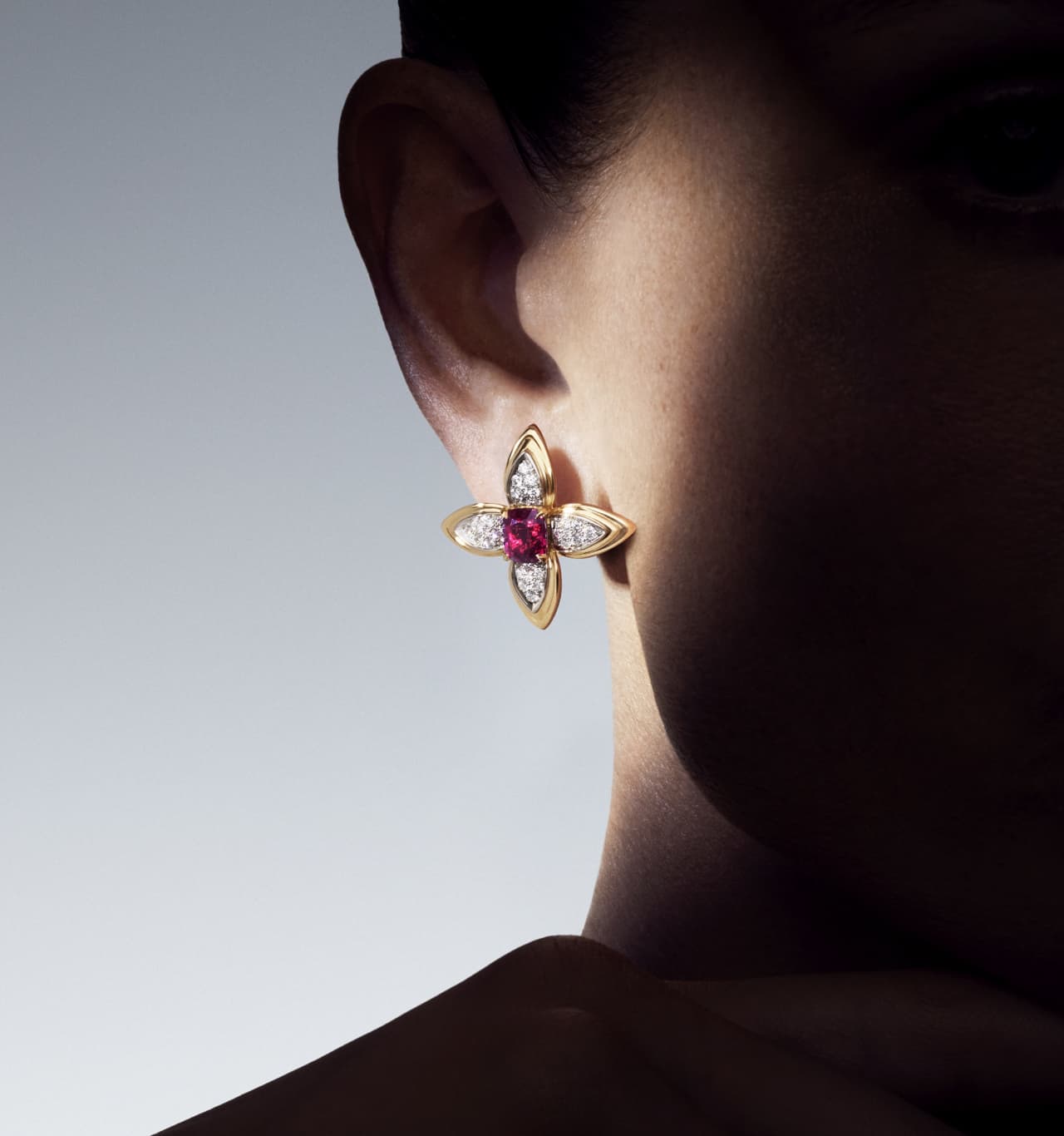
Courtesy of Louis Vuitton
The necklace pays homage to the Eiffel Tower, which was unveiled to the world at the 1899 Exposition Universelle as a beacon of modernity and ingenuity. The Cœur de Paris offers a new perspective on the structure, as if you are viewing it from underneath looking up. Pink gold rods embrace a grid of baguette settings and diamond-lit arrows, which frame the jewel’s centrepiece: a captivating 56.23-carat diamond christened the Cœur de Paris. The collection’s rarest and most important master stone radiates a unique colour with an intense pink hue complemented with unusual tones of orange and brown. It is set in a medallion that can be detached to wear as a brooch.
The centrepiece dangles from a 5.73-carat LV Monogram Star-cut diamond interlinked with 26 LV Monogram Star-cut diamonds in an opulent rivière creation that is a first for the house. A companion ring features a complementary 12.67-carat, museum-quality diamond that emanates a fancy deep, brownish pink and orange hue.
“Awakened Hands, Awakened Minds tells a story that’s very close to who we are,” Amfitheatrof said. “By showing this mixture of craftsmanship, engineering, invention, and bravery, we are really talking about Louis Vuitton. … we couldn’t celebrate in a better way.”
 Copyright 2020, Dow Jones & Company, Inc. All Rights Reserved Worldwide. LEARN MORE
Copyright 2020, Dow Jones & Company, Inc. All Rights Reserved Worldwide. LEARN MORE
What a quarter-million dollars gets you in the western capital.
Alexandre de Betak and his wife are focusing on their most personal project yet.
Subsidised minivans, no income taxes: Countries have rolled out a range of benefits to encourage bigger families, with no luck
Imagine if having children came with more than $150,000 in cheap loans, a subsidised minivan and a lifetime exemption from income taxes.
Would people have more kids? The answer, it seems, is no.
These are among the benefits—along with cheap child care, extra vacation and free fertility treatments—that have been doled out to parents in different parts of Europe, a region at the forefront of the worldwide baby shortage. Europe’s overall population shrank during the pandemic and is on track to contract by about 40 million by 2050, according to United Nations statistics.
Birthrates have been falling across the developed world since the 1960s. But the decline hit Europe harder and faster than demographers expected—a foreshadowing of the sudden drop in the U.S. fertility rate in recent years.
Reversing the decline in birthrates has become a national priority among governments worldwide, including in China and Russia , where Vladimir Putin declared 2024 “the year of the family.” In the U.S., both Kamala Harris and Donald Trump have pledged to rethink the U.S.’s family policies . Harris wants to offer a $6,000 baby bonus. Trump has floated free in vitro fertilisation and tax deductions for parents.
Europe and other demographically challenged economies in Asia such as South Korea and Singapore have been pushing back against the demographic tide with lavish parental benefits for a generation. Yet falling fertility has persisted among nearly all age groups, incomes and education levels. Those who have many children often say they would have them even without the benefits. Those who don’t say the benefits don’t make enough of a difference.

Two European countries devote more resources to families than almost any other nation: Hungary and Norway. Despite their programs, they have fertility rates of 1.5 and 1.4 children for every woman, respectively—far below the replacement rate of 2.1, the level needed to keep the population steady. The U.S. fertility rate is 1.6.
Demographers suggest the reluctance to have kids is a fundamental cultural shift rather than a purely financial one.
“I used to say to myself, I’m too young. I have to finish my bachelor’s degree. I have to find a partner. Then suddenly I woke up and I was 28 years old, married, with a car and a house and a flexible job and there were no more excuses,” said Norwegian Nancy Lystad Herz. “Even though there are now no practical barriers, I realised that I don’t want children.”
The Hungarian model
Both Hungary and Norway spend more than 3% of GDP on their different approaches to promoting families—more than the amount they spend on their militaries, according to the Organization for Economic Cooperation and Development.
Hungary says in recent years its spending on policies for families has exceeded 5% of GDP. The U.S. spends around 1% of GDP on family support through child tax credits and programs aimed at low-income Americans.
Hungary’s subsidised housing loan program has helped almost 250,000 families buy or upgrade their homes, the government says. Orsolya Kocsis, a 28-year-old working in human resources, knows having kids would help her and her husband buy a larger house in Budapest, but it isn’t enough to change her mind about not wanting children.
“If we were to say we’ll have two kids, we could basically buy a new house tomorrow,” she said. “But morally, I would not feel right having brought a life into this world to buy a house.”
Promoting baby-making, known as pro natalism, is a key plank of Prime Minister Viktor Orbán ’s broader populist agenda . Hungary’s biennial Budapest Demographic Summit has become a meeting ground for prominent conservative politicians and thinkers. Former Fox News anchor Tucker Carlson and JD Vance, Trump’s vice president pick, have lauded Orbán’s family policies.
Orbán portrays having children inside what he has called a “traditional” family model as a national duty, as well as an alternative to immigration for growing the population. The benefits for child-rearing in Hungary are mostly reserved for married, heterosexual, middle-class couples. Couples who divorce lose subsidised interest rates and in some cases have to pay back the support.
Hungary’s population, now less than 10 million, has been shrinking since the 1980s. The country is about the size of Indiana.
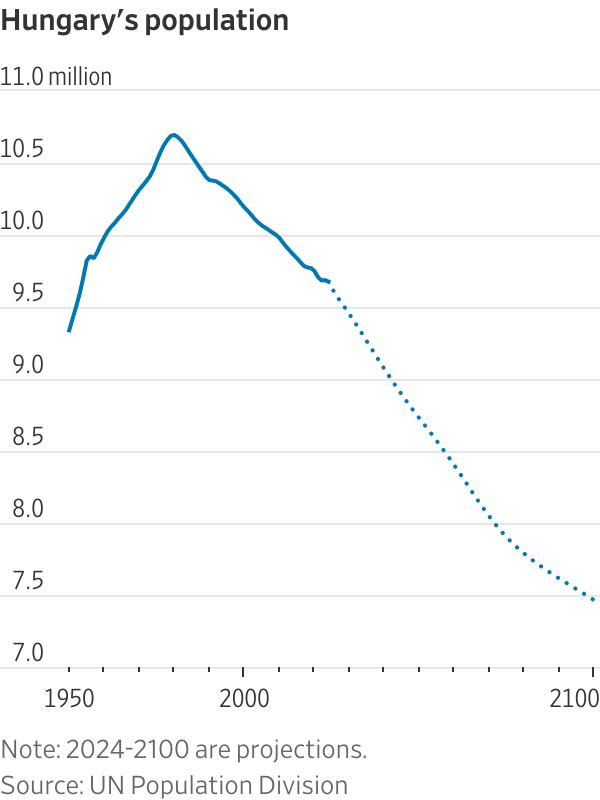
“Because there are so few of us, there’s always this fear that we are disappearing,” said Zsuzsanna Szelényi, program director at the CEU Democracy Institute and author of a book on Orbán.
Hungary’s fertility rate collapsed after the fall of the Soviet Union and by 2010 was down to 1.25 children for every woman. Orbán, a father of five, and his Fidesz party swept back into power that year after being ousted in the early 2000s. He expanded the family support system over the next decade.
Hungary’s fertility rate rose to 1.6 children for every woman in 2021. Ivett Szalma, an associate professor at Corvinus University of Budapest, said that like in many other countries, women in Hungary who had delayed having children after the global financial crisis were finally catching up.
Then progress stalled. Hungary’s fertility rate has fallen for the past two years. Around 51,500 babies have been born there this year through August, a 10% drop compared with the same period last year. Many Hungarian women cite underfunded public health and education systems and difficulties balancing work and family as part of their hesitation to have more children.
Anna Nagy, a 35-year-old former lawyer, had her son in January 2021. She received a loan of about $27,300 that she didn’t have to start paying back until he turned 3. Nagy had left her job before getting pregnant but still received government-funded maternity payments, equal to 70% of her former salary, for the first two years and a smaller amount for a third year.
She used to think she wanted two or three kids, but now only wants one. She is frustrated at the implication that demographic challenges are her responsibility to solve. Economists point to increased immigration and a higher retirement age as other offsets to the financial strains on government budgets from a declining population.
“It’s not our duty as Hungarian women to keep the nation alive,” she said.
Big families
Hungary is especially generous to families who have several children, or who give birth at younger ages. Last year, the government announced it would restrict the loan program used by Nagy to women under 30. Families who pledge to have three or more children can get more than $150,000 in subsidised loans. Other benefits include a lifetime exemption from personal taxes for mothers with four or more kids, and up to seven extra annual vacation days for both parents.
Under another program that’s now expired, nearly 30,000 families used a subsidy to buy a minivan, the government said.
Critics of Hungary’s family policies say the money is wasted on people who would have had large families anyway. The government has also been criticised for excluding groups such as the minority Roma population and poorer Hungarians. Bank accounts, credit histories and a steady employment history are required for many of the incentives.
Orbán’s press office didn’t respond to requests for comment. Tünde Fűrész, head of a government-backed demographic research institute, disagreed that the policies are exclusionary and said the loans were used more heavily in economically depressed areas.
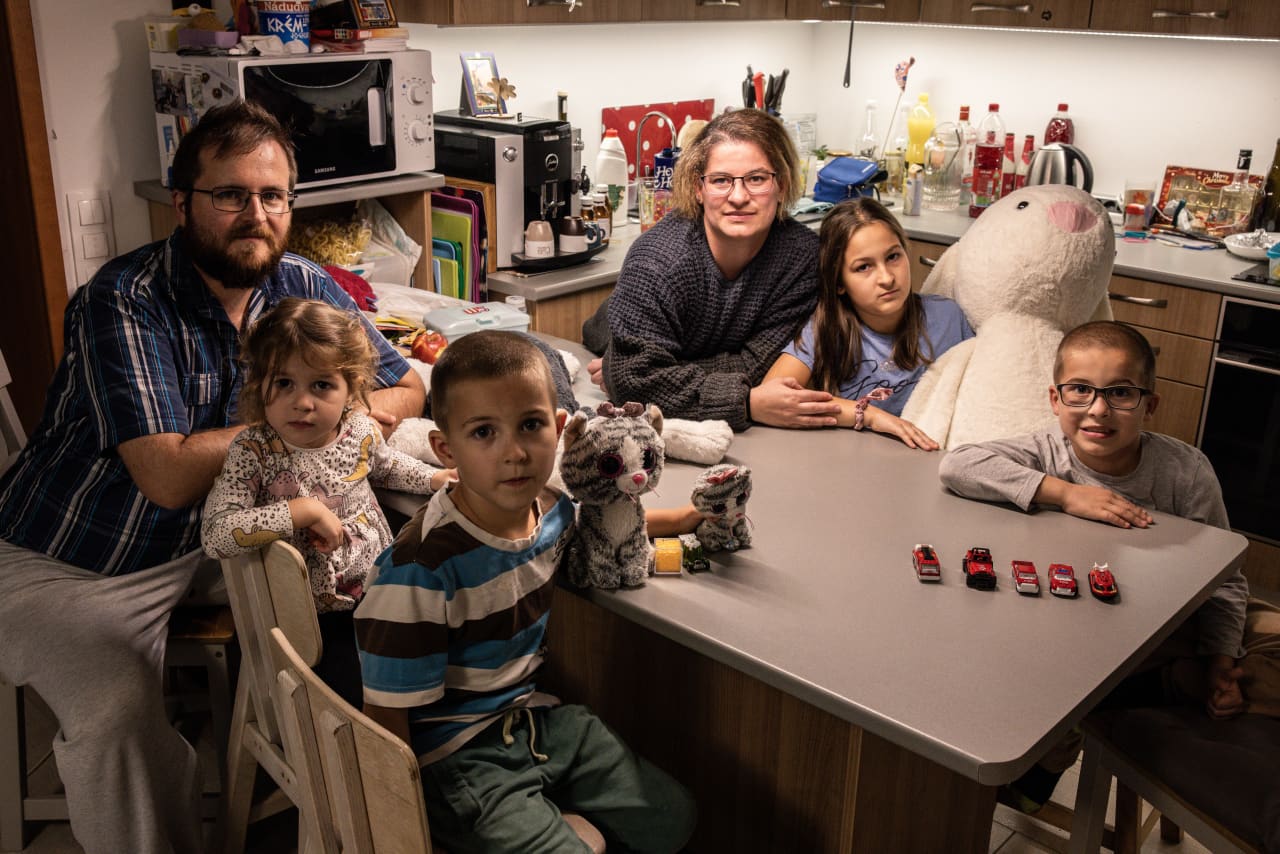
Government programs weren’t a determining factor for Eszter Gerencsér, 37, who said she and her husband always wanted a big family. They have four children, ages 3 to 10.
They received about $62,800 in low-interest loans through government programs and $35,500 in grants. They used the money to buy and renovate a house outside of Budapest. After she had her fourth child, the government forgave $11,000 of the debt. Her family receives a monthly payment of about $40 a month for each child.
Most Hungarian women stay home with their children until they turn 2, after which maternity payments are reduced. Publicly run nurseries are free for large families like hers. Gerencsér worked on and off between her pregnancies and returned full-time to work, in a civil-service job, earlier this year.
She still thinks Hungarian society is stacked against mothers and said she struggled to find a job because employers worried she would have to take lots of time off.
The country’s international reputation as family-friendly is “what you call good marketing,” she said.
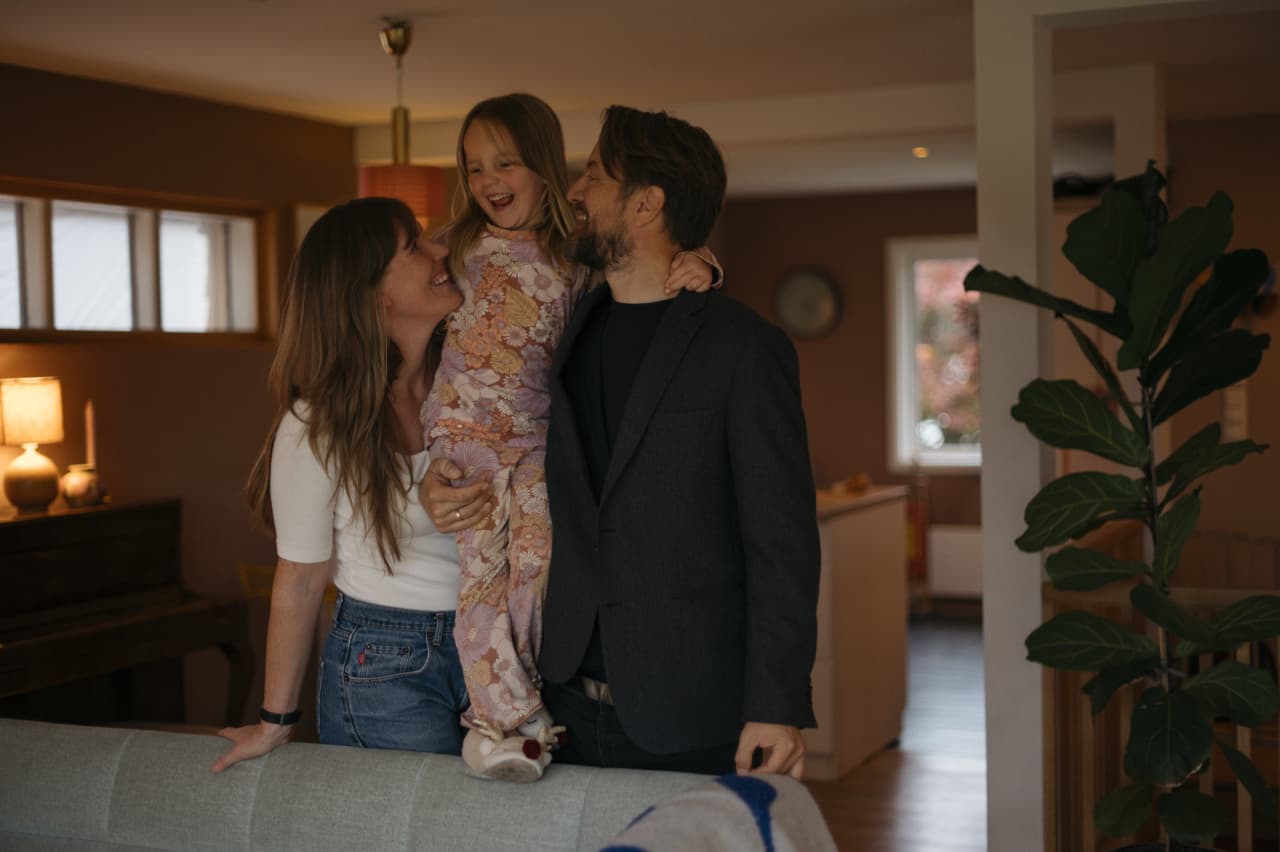
Nordic largesse
Norway has been incentivising births for decades with generous parental leave and subsidised child care. New parents in Norway can share nearly a year of fully paid leave, or around 14 months at 80% pay. More than three months are reserved for fathers to encourage more equal caregiving. Mothers are entitled to take at least an hour at work to breast-feed or pump.
The government’s goal has never been explicitly to encourage people to have more children, but instead to make it easier for women to balance careers and children, said Trude Lappegard, a professor who researches demography at the University of Oslo. Norway doesn’t restrict benefits for unmarried parents or same-sex couples.
Its fertility rate of 1.4 children per woman has steadily fallen from nearly 2 in 2009. Unlike Hungary, Norway’s population is still growing for now, due mostly to immigration.
“It is difficult to say why the population is having fewer children,” Kjersti Toppe, the Norwegian Minister of Children and Families, said in an email. She said the government has increased monthly payments for parents and has formed a committee to investigate the baby bust and ways to reverse it.
More women in Norway are childless or have only one kid. The percentage of 45-year-old women with three or more children fell to 27.5% last year from 33% in 2010. Women are also waiting longer to have children—the average age at which women had their first child reached 30.3 last year. The global surge in housing costs and a longer timeline for getting established in careers likely plays a role, researchers say. Older first-time mothers can face obstacles: Women 35 and older are at higher risk of infertility and pregnancy complications.
Gina Ekholt, 39, said the government’s policies have helped offset much of the costs of having a child and allowed her to maintain her career as a senior adviser at the nonprofit Save the Children Norway. She had her daughter at age 34 after a round of state-subsidised IVF that cost about $1,600. She wanted to have more children but can’t because of fertility issues.
She receives a monthly stipend of about $160 a month, almost fully offsetting a $190 monthly nursery fee.
“On the economy side, it hasn’t made a bump. What’s been difficult for me is trying to have another kid,” she said. “The notion that we should have more kids, and you’re very selfish if you have only had one…those are the things that took a toll on me.”
Her friend Ewa Sapieżyńska, a 44-year-old Polish-Norwegian writer and social scientist with one son, has helped her see the upside of the one-child lifestyle. “For me, the decision is not about money. It’s about my life,” she said.





